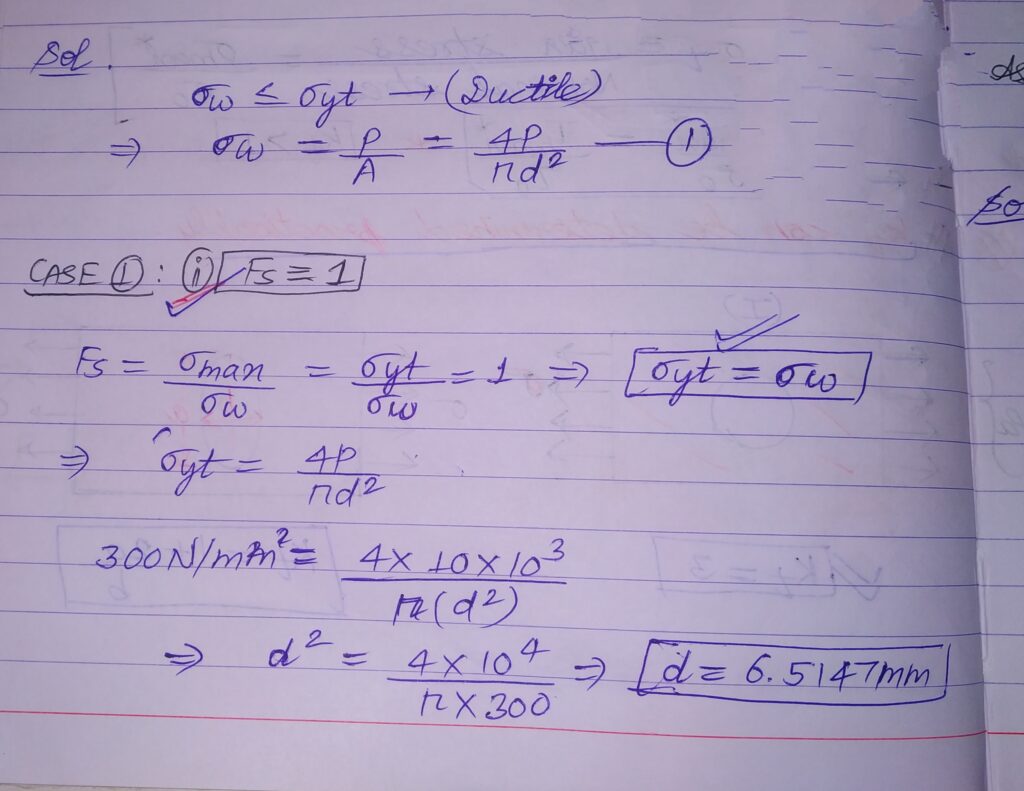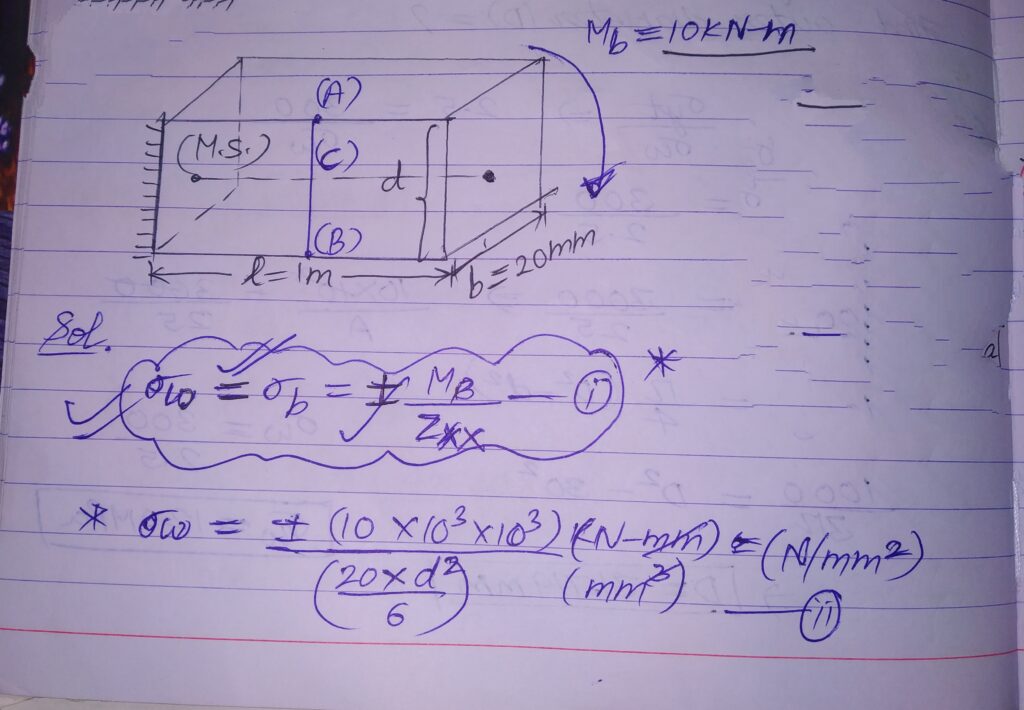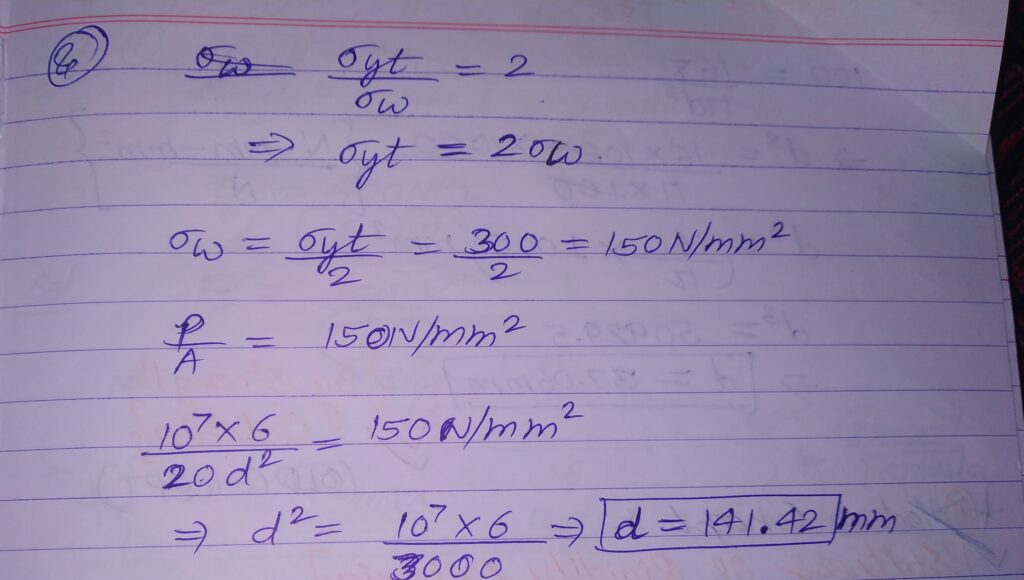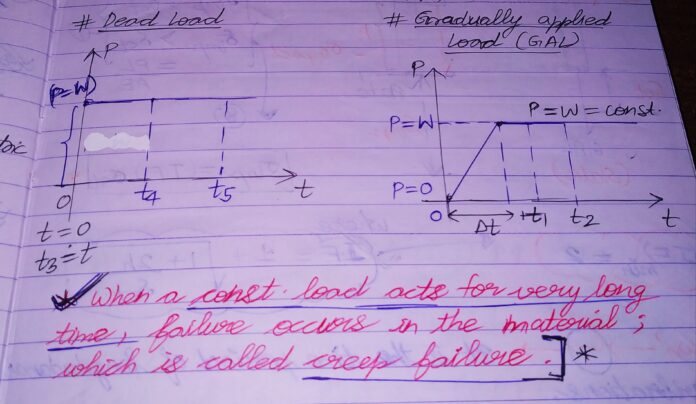DESIGN STRESSES AND CONCEPT OF FACTOR OF SAFETY (FOS)
DESIGN and Designing are to be safely done of a machine element, so it is necessary for it to have some backup strength. This is usually called reserve strength OR backup strength.
This usually saves an element from sudden failure cases as well as keeps the material safe.
A suitable factor taken for its study in design.
So,The factor called factor of safety(FOS) taken for study.
FACTORS CAUSING DESIGN UNCERTAINTY
1.Uncertainty due to force/load.
2.Uncertainty due to materials properties.
3.Uncertainty due to elemental dimensions.
FACTOR OF SAFETY (FOS)
Defined as the ratio of MAX. PERMISSIBLE/ALLOWABLE STRESS to the MAX. APPLIED STRESS/WORKING STRESS.
FOS = (Max. allowable or permissible stress)/ (max .working stress) = (σmax or σyt or σut)/ (σworking)
Here , σyt for ductile materials and σut for brittle materials.
FACTORS ON WHICH “FOS”DEPENDS:
1.EFFECT OF FAILURE : FOS depends on the effect of failure. A ball bearing of gearbox has a small failure . But , a valve in pressure vessel may cause huge losses. So, FOS kept high in major risk applications and low in minor risk works.
2.TYPE OF LOAD : FOS depends on the type of acting load .Therefore, a static load system kept with low value of FOS. Whereas , an impact load system always kept with high value of FOS.
3.DEGREE OF ACCURACY IN FORCE ANALYSIS: A lower FOS taken for the systems wherever forces acting on the system are known and precise. Whereas for undetermined and non precise force systems ,higher FOS is taken for study.
4.COMPONENT MATERIAL: Parts made of homogeneous ductile material (mild steel) has a small FOS , since yield strength is failure criterion. Whereas, for cast iron(non homogeneous and brittle), high FOS used for use , since ultimate strength criteria of failure.
5.RELIABILITY OF COMPONENT: Parts with high reliability usually used in applications of high thermal and power stations. So high FOS always kept in design. Whereas, for other uses, FOS usually kept small.
6.COMPONENT COST AND MAKING: Parts with high FOS have usually greater dimensions, greater material use and therefore greater cost of making. Moreover, cheap parts have usually low value of FOS.
7.SERVICE AND OPERATION CONDITIONS: Elements working under corrosive and high temperature conditions have greater FOS for safe use AS COMPARED to normal working parts.
SELECTION OF “FOS”: RANGE AT DIFFERENT DESIGN CONDITIONS
| DESIGN LOADING CONDITIONS | FOS VALUE RANGE |
| 1.MILD STEEL (WHICH HAS DUCTILE LOADING) | 1.5 TO 2 |
| 2.CAST IRON (WHICH HAS BRITTLE LOADING) | 3 TO 5 |
| 3.TANGENTIAL LOAD(WHICH CAUSES SHEAR STRESS) | 1.5 TO 2 |
| 4.FATIGUE LOADING (WHICH CREATES ENDURANCE STRESS) | 1.3 TO 1.5 |
| 5.PITTING INDUCED LOADING (WHICH OCCURS DUE TO SURFACE FAILURE STRESS) | 1.8 TO 2.5 |
| 6. BUCKLING INDUCED LOADING (WHICH IS SEEN IN COLUMNS) | 3 TO 6 |
Although Factor of Safety (FOS) changes according to loading conditions, but FOS plays important role in material design.
LET’ S solve Some questions related to FOS.
NUMERICALS:
Q1. A shaft of length= 1m under axial loading . IF P=10 kN , GIVEN THAT ;
Yield strength of mild steel = 300 MPa Ultimate strength of mild steel = 400 MPa

then find diameter of the shaft under loading when:
a) FOS=1 b) FOS =2
SOLUTION:


Q2. An element subjected to a bending moment Mb of magnitude 10 kN-m. Material made of M.S.(mild steel) . GIVEN THAT : σyt = σyc =300 MPa and FOS=2
Find diameter of the shaft according to the given conditions.
SOLUTION:







